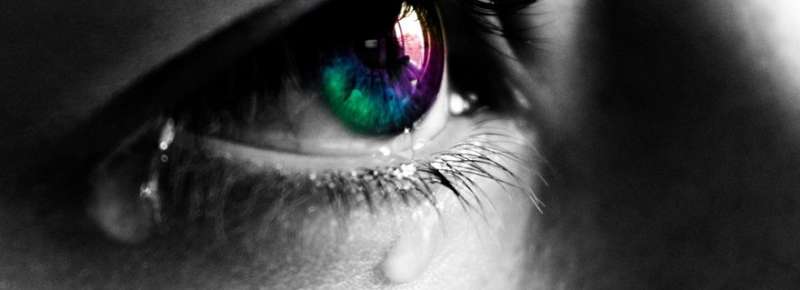Credit: Axel Naud
By measuring proteins in tears, ophthalmologists can more easily diagnose dry eyes (dry eye disease). Peter Raus, a Belgian ophthalmologist and Ph.D. student at the Institute of Biology Leiden, developed a new method for protein determination in tear fluid. The technique is also promising for the early diagnosis of diseases such as diabetes, neurodegenerative diseases and even cardiac decompensation. Ph.D. defence 4 September.
Dry eye disease (DED) is a common eye disease, which can cause blindness (see box). This condition is often difficult to diagnose in patients. As a result, treatment is difficult, Peter Raus knows from his work as an ophthalmologist. His innovative method now offers ophthalmologists hope. By screening the tear fluid of DED patients with the latest and most powerful equipment, Raus has succeeded in mapping out the proteins IN TEARS in detail. The different forms of proteins, the so-called proteoforms, are particularly important in this respect. These give an indication of what exactly is going wrong in a patient with dry eyes, which in turn makes treatment easier.
Measuring in the eye clinic
At the moment, a measurement still requires a highly advanced mass spectrometer – a device of 1.5 million euros – with which a measurement takes several hours. This is not feasible for a hospital or eye clinic. But application in the clinic is not far away, says Raus. "We only need one step: we need to create a database of all the proteoforms in tear fluid. Then, complicated measurements are no longer necessary. With the help of a much smaller set-up and only a little bit of tear fluid, ophthalmologists can make a diagnosis within five minutes in their own practice."
Detecting diabetes in tear fluid
In addition to diagnosing DED, analysing tear fluid is also a promising technique for the early diagnosis of other conditions, including diabetes. "Diabetes is now often diagnosed at a late stage of the disease," says Raus. "Using our tear fluid method, you could diagnose diabetes much earlier. As a result, in many cases it will be easier to treat the disease."
Ph.D. supervisors Peter Verhaert and Han de Winde are very pleased with the technology developed by Raus, especially about how innovative it is. "We are not the only ones in the world who look at tear fluid as a diagnostic tool. But we were the first to combine the latest equipment with the latest analytical strategies focused on protein forms. Approximately 95% of all researchers first cut the proteins into pieces, before analysing them. The new generation of mass spectrometers is analytically so powerful and sensitive that we do not have to cut the proteins to discover the many different protein modifications in tear fluid. This is not possible with more traditional approaches and techniques."
Bridge between physicians and analysts
With his Ph.D. research, Raus broadens the currently narrow but much-needed connection between the medical world and the analytical-scientific world. "Ophthalmologists do not know what they can ask the analysts and the analysts do not know what the ophthalmologists need," Raus outlines the problem. Both supervisors are therefore very pleased with the bridge that Raus forms. "It is important that you understand each other's language. That is why it is fantastic that Peter Raus' thesis brings these worlds together."
Dry eye disease is a condition in which the eye does not produce enough tear fluid. This can cause pain, poor vision and even blindness. It occurs in 7% of the American population, and up to 33 percent in Taiwan and Japan. People over the age of 60 are particularly affected by DED.
Provided by Leiden University























